Announcements of CPU processors tend to focus on bigger, better, faster—which usually means concentrated attention on the flagship chip. But back in August, when AMD finally spilled details about Ryzen 7000, the most startling info wasn’t about the top-of-the-line, beefy Ryzen 9 7950X. Instead, Team Red shocked everyone by saying that the humble Ryzen 5 7600X could beat Intel’s flagship Core i9-12900K.
Now that the 7600X is here, it’s clear that AMD wasn’t exaggerating. This 6-core, 12-thread chip is beastly in gaming, able to go to toe-to-toe with rivals far above its weight class. And it can do so in multiple titles.
We’d call it a clear win for AMD—except the chip is dragged down by the very advances that help its siblings shine.
Ryzen 7000, recapped
You can read our initial write-up about Ryzen 7000 for the full technical details of AMD’s first Zen 4 chips. (Alternatively, you can zip through the condensed summary if you’re short on time.) But in a nutshell, the launch chips sport substantial improvements in clock speed and performance over Ryzen 5000, their predecessor.
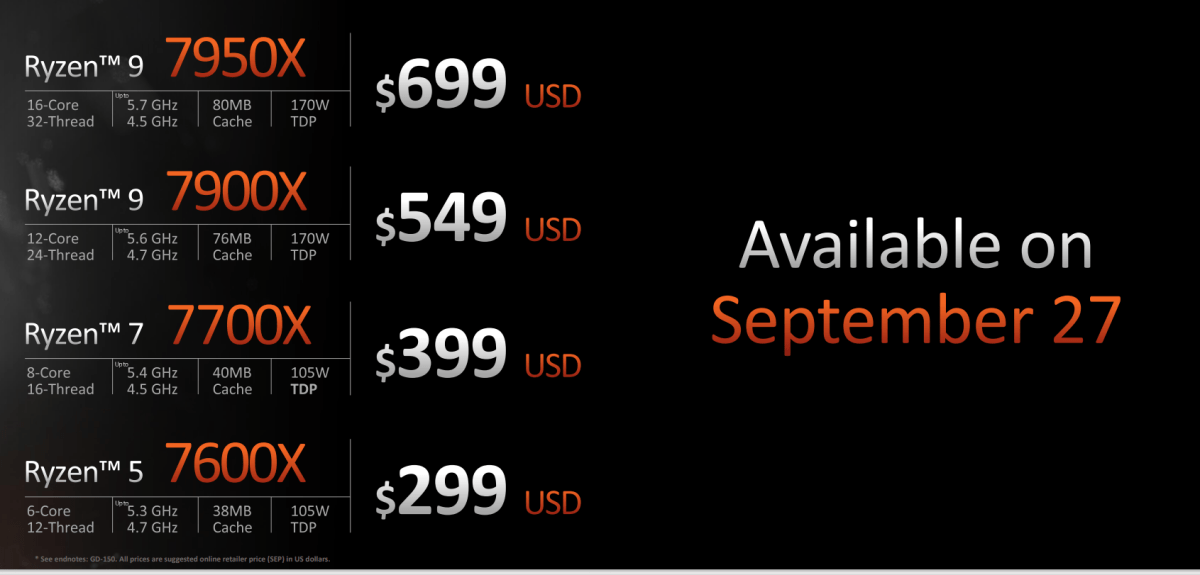
AMD
These advancements are the result of several firsts for AMD. Ryzen 7000 chips are the first on 5nm, first to use Zen 4 architecture, and the first compatible with the company’s new AM5 socket. AM5 offers a couple of major advancements over the long-lived, much-beloved socket AM4 platform—namely, support for lightning-fast PCIe 5 components and DDR5 memory, plus a shift to an LGA design that supports higher power use (and ends the era of bent CPU pins, as LGA moves pins to the motherboard socket instead).
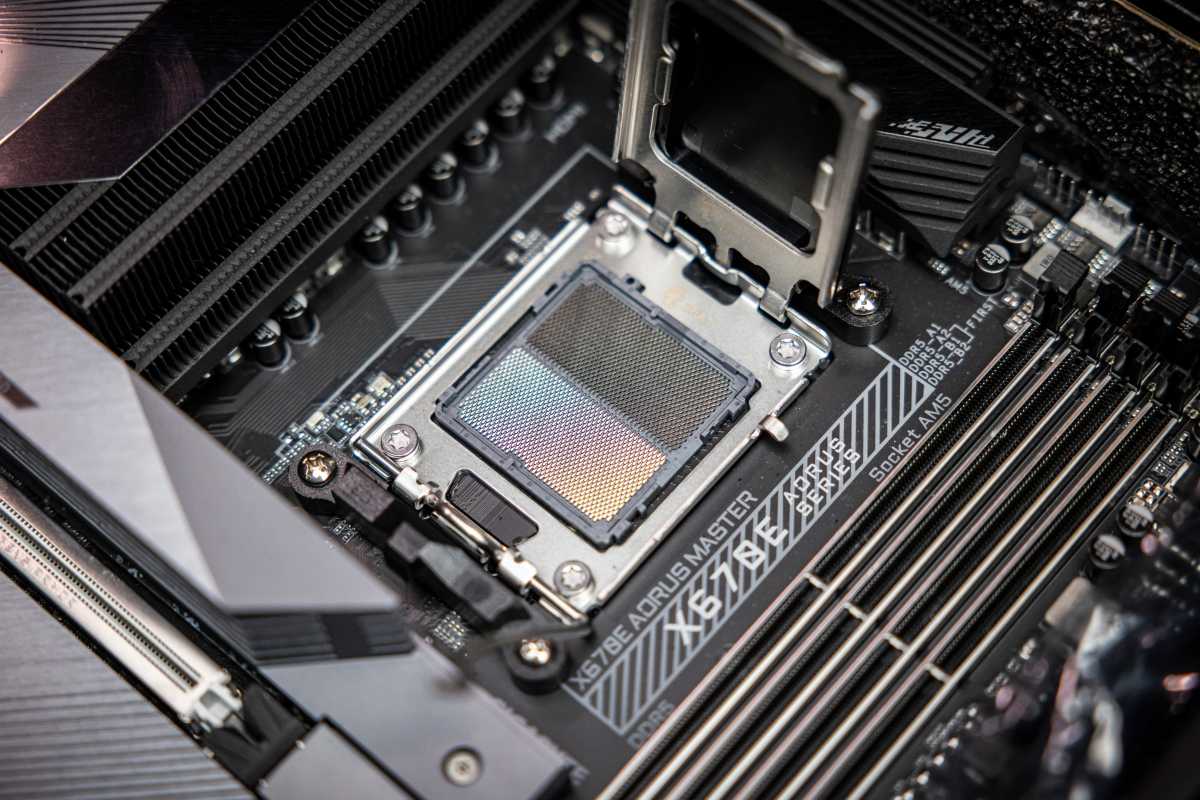
Adam Patrick Murray / IDG
And Ryzen 7000 definitely stretches into that higher energy draw. For the 7600X, you’re looking at an expected wattage of 105 watts drawn under load. If the chip draws more power while boosting, its cap as provided by its AM5 socket is 230W. The 5600X was rated at 65W, with a limit of 142W through its AM4 socket.
Ryzen 7000’s other major new feature is integrated graphics, which will make it easier to troubleshoot problems with your PC—you won’t have to have a dedicated graphics card plugged in to get a video signal. And when budget chips eventually launch, you can save cash by skipping the added expense of a discrete card for basic-use PCs.
Performance
As a 6-core, 12-thread chip, the Ryzen 5 7600X is ostensibly branded as a more affordable mid-tier option—a processor meant for focused use in gaming and productivity (Microsoft Office, web browsing, photo editing, etc.) But this CPU can often flex its muscles as hard as bigger, badder processors in those areas, if not harder. Let’s dive into the numbers.
A note about our data: The benchmark scores in this review were generously provided to us by our colleague Sebastian Schenzinger from our sister site, PC Welt. (You can read his Ryzen 7600X review in German.) For detailed info on the test machines used in his benchmarks, jump to end of this article.
Gaming
We’ll start with the unexpected battle between the Ryzen 5 7600X and Intel Core i9-12900K. It’s a riveting showdown—at 1080p (the most popular resolution for gaming), AMD’s 7600X edges out Team Blue’s flagship part in 5 of the 12 games in PC Welt’s benchmark suite.












To view our benchmark charts at full size, right-click (PC) or long press (mobile) on the image and then open it in a new tab or window.
The size of the wins are uneven, however, with the Ryzen 5 7600X taking a clear lead in Shadow of the Tomb Raider and the 12900K punching harder in Cyberpunk 2077. In other games, the difference is much smaller—just bare percentage points. Regardless, you can still see that AMD’s claims weren’t just carefully curated marketing. Its 6-core, 12-thread processor can hold its own against Intel’s $589 20-core, 24-thread flagship CPU. Sure, the story would be more incredible if the 7600X won in every single benchmark, but this outcome is still a feat.
Also interesting is the 7600X’s performance compared to Ryzen 5000’s gaming demon, the incredible Ryzen 7 5800X3D. The latter (and its fancy 3D V-Cache tech) stole the gaming crown from Intel upon launch back in April, but despite being superseded by Ryzen 7000, it still has plenty of pep in its step. On the whole, the 5800X3D outperforms the 7600X across the board—an interesting fact to keep in mind, given sale prices for the 5800X3D have dropped it into the mid-$300s as of late.












To view our benchmark charts at full size, right-click (PC) or long press (mobile) on the image and then open it in a new tab or window.
Not convinced of the Ryzen 5 7600X’s accomplishments? We can drop down to 720p. It’s no longer a common gaming resolution, but reducing the number of pixels provides a less diluted measurement of CPU performance. Because the GPU has the easier job at lower resolutions, it’s on the CPU to keep up.
Like at 1080p, you’ll see similar trends in chip performance between the 7600X and the 12900K (including the same uneven variance between individual games), though the percentage differences widen. The same holds true for the 7600X and 5800X3D.
Production
Outside of gaming, you’ll most commonly use a processor like the Ryzen 5 7600X for light photo editing and infrequent encoding of game captures or a crunched-down home video. Impressively, the Ryzen 5 7600X sings in Adobe Photoshop—it even bests the Core i9-12900K by a tiny amount.
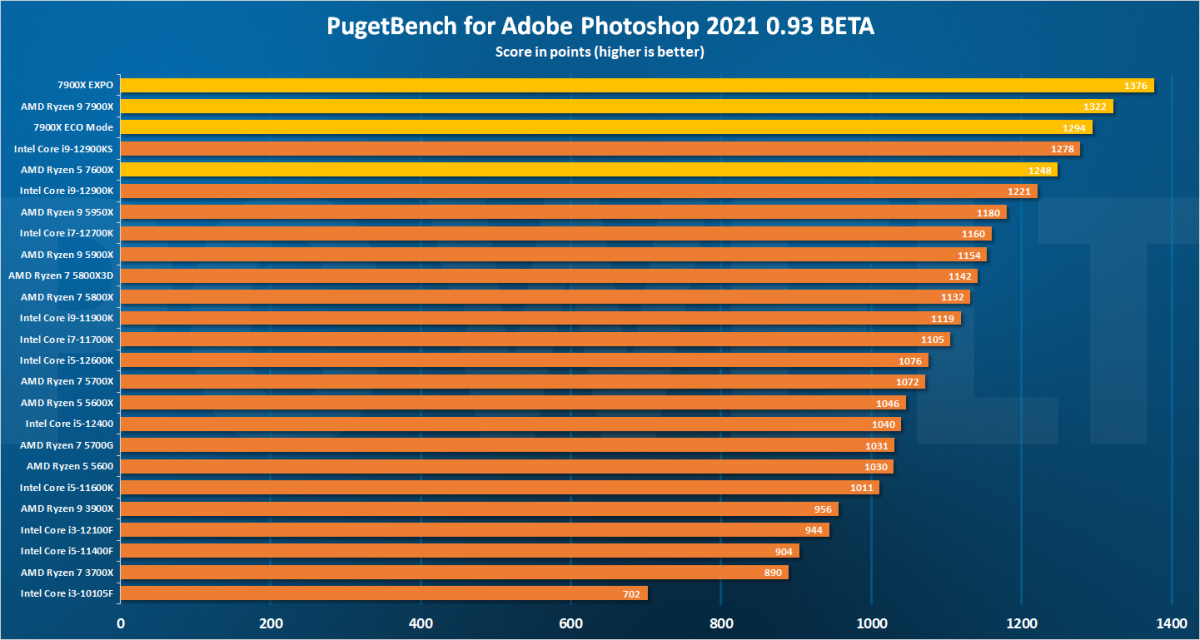
Sebastian Schenzinger / PC Welt
Move into tasks like video editing, encoding, and rendering, and the Core i9-12900K surges ahead, as you’d expect—those multithreaded tasks take full advantage of the 12900K’s greater number of cores and threads, which make it suited for heavy workloads.

Sebastian Schenzinger / PC Welt
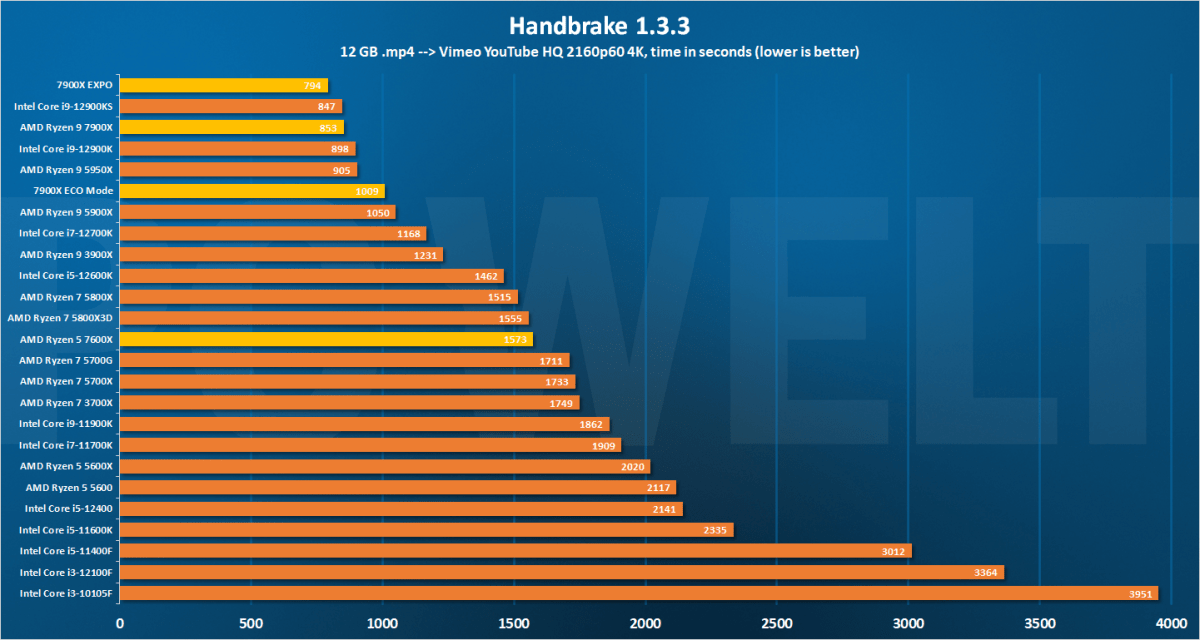
Sebastian Schenzinger / PC Welt
The more fair head-to-head is against the Intel Core i5-12600K, the 7600X’s comparable rival. You can expect similar performance in programs like Davinci Resolve, Premiere Pro, and Handbrake, though the chips trade the top spot depending on the program. Incidentally, in Premiere Pro, the 12600K may be more of the true winner, even though the 7600X wins on raw performance. Because Adobe makes use of Intel’s QuickSync technology, which taps the chips’ integrated graphics to speed things up, it can give Team Blue a sizable advantage in performance. If you look at our Ryzen 9 7950X review, the 7950X gets beaten by the 12900K in Premiere by almost 20 percent. If for some reason you end up working in Premiere Pro, the time saved with an Intel chip can materially affect how much you can get done in one day—especially when you’re working on a side project or labor of love.

Sebastian Schenzinger / PC Welt
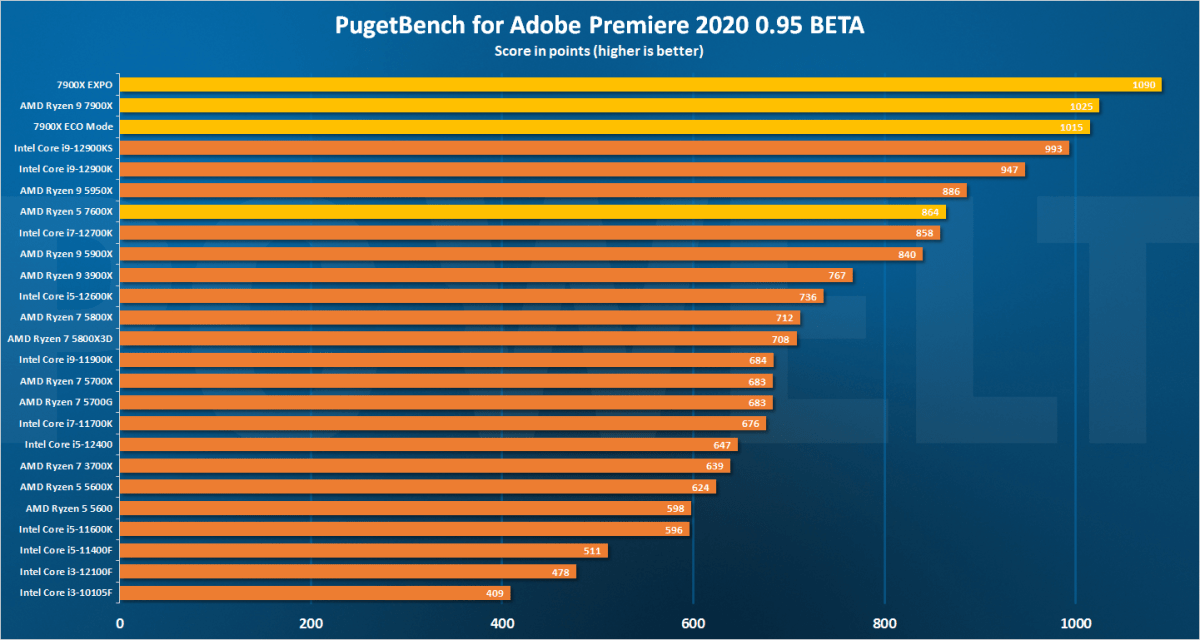
Sebastian Schenzinger / PC Welt
In these kinds of tasks, the 7600X also often comes very close performance to the Ryzen 7 5800X and 5800X3D. It’s particularly impressive, given that those chips launched at much higher list prices ($150 more) than the 7600X.
Final thoughts
AMD’s Ryzen 5 7600X is clearly an outstanding processor. But it has one major problem, and that’s cost.
Everything is more expensive these days, including CPUs. Two generations ago, the 3600X was $250, while the 8-core, 16-thread 3700X came in at $329. With the 7600X, you’re still paying more for fewer cores.
Some folks, like my colleague Gordon Mah Ung, would argue that’s the entry fee to badass new tech—especially since AMD offers such top-notch performance. (Just as it did for Ryzen 5000.) That’s a fair point, but other core components are still pricier, too. DDR5 memory is still about twice as expensive as DDR4 memory, and an AM5 motherboard with full PCIe 5 support for graphics cards and storage carry a premium. Those features help the 7950X and 7900X scream in benchmarks, and help future-proof the AM5 motherboard platform, but they also add to the necessary budget for a mid-range gaming build.
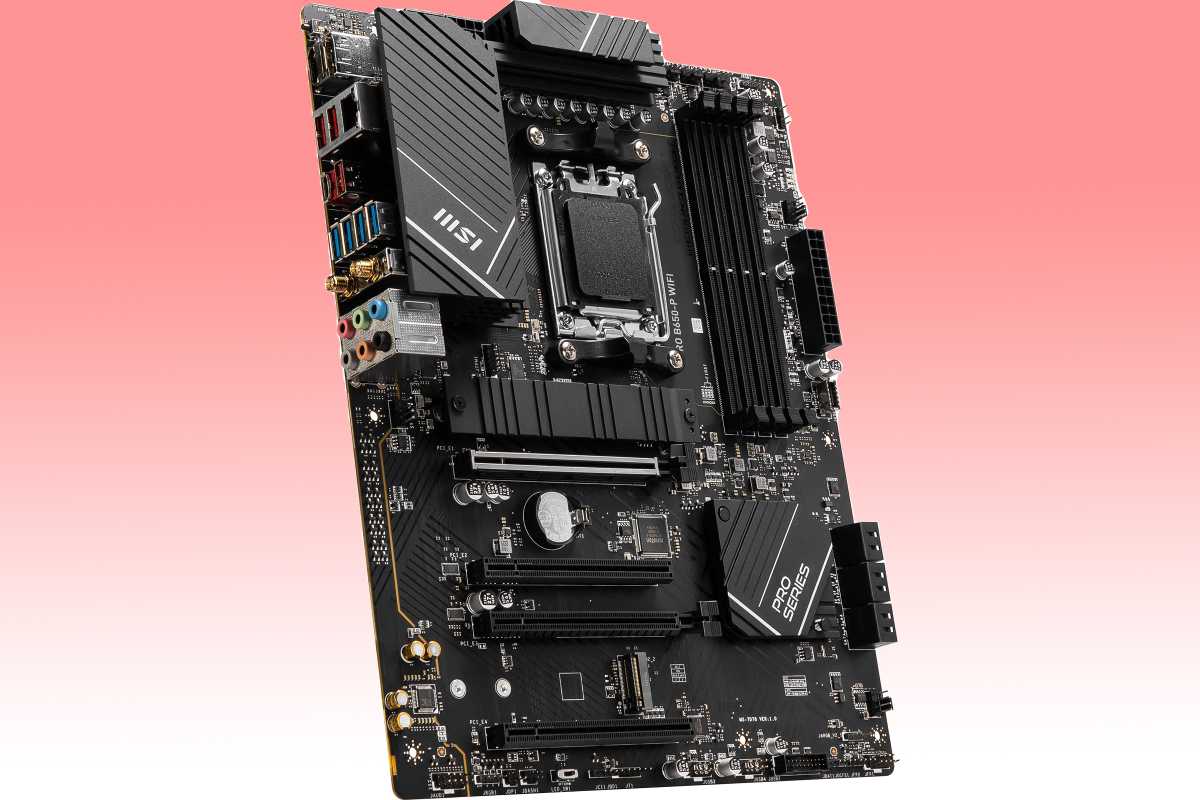
MSI
Of course, you don’t need to go to an extreme with future-proofing on a mid-tier system. And since it’s unlikely you won’t—there’s not much stopping you from considering reasonable alternatives.
Take the Ryzen 7 5800X3D. As we saw earlier, it outperforms the 7600X in games. You can find plenty of affordable options for DDR4 memory and AM4 motherboards, too. With the 5800X3D going on sale semi-regularly as of late, it comes out to roughly the same outlay as with a 7600X. (At the time of this writing, you could get a 5800X3D for $365 on sale at Newegg.) Depending on your preferences and upgrade plans, getting higher framerates could justify sticking with the now-stagnant AM4 platform, and its lack of PCIe 5 and DDR5 support.

Intel
There’s also Intel’s 13th-gen Raptor Lake to consider, which is coming October 20th. Team Blue says its upcoming chips will be up to 24 percent faster than 12th-gen Alder Lake in games. A $319 Core i5-13600K could end up supplanting the 7600X as the best mid-tier gaming CPU. For added appeal, the company also renewed its support for both DDR4 or DDR5 memory, making it still possible to buy a DDR4 motherboard for lower-cost RAM.
And for people with a longer horizon, more Ryzen 7000 processors should eventually arrive. Though AMD has not announced their future plans for Ryzen 7000, a less costly Ryzen 5 7600 or similarly priced Ryzen 7 7700 will likely join the lineup down the road. DDR5 memory will continue to drop in price too.
The short of it is, the Ryzen 5 7600X screams, but isn’t quite a must-buy chip for mid-range gaming builds just yet. Budgets and value matter—even more so than incredible performance.
Ryzen 5 7600X test machine info

PCWorld
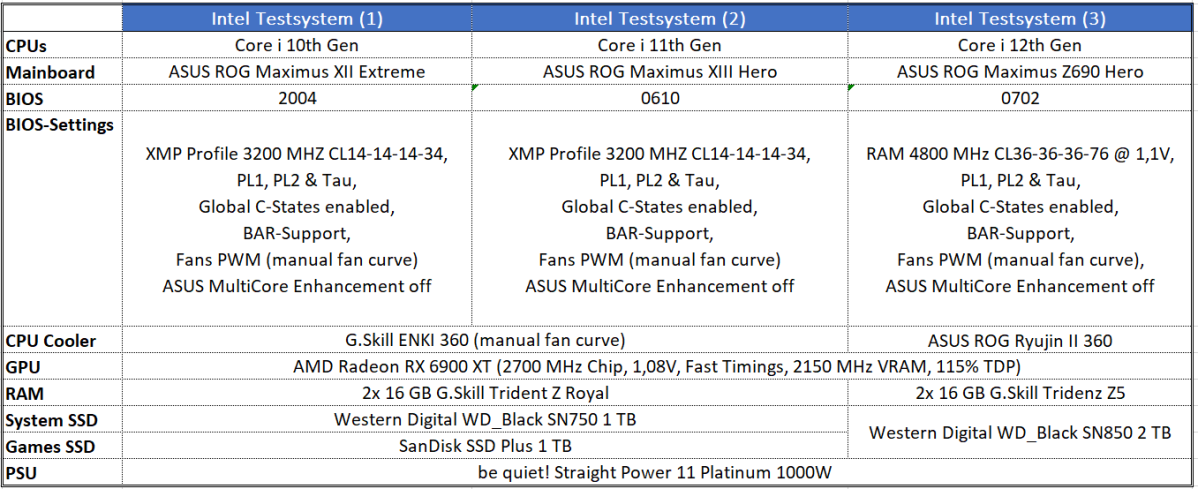
PCWorld

